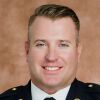Our world has changed dramatically.
As a fire chief of a combination department, the reality of the challenges we now face during the COVID-19 pandemic really began to set in for me on March 1.
We as fire service leaders found ourselves stressed and overwhelmed, feeling the burden of the unknown.
As we all attempt to forecast our needs and deal with increasingly difficult challenges ahead of us, I wanted to share four important concepts that I hope will lessen the stress you are likely feeling: Be Present, Communicate, Do What’s Right, and Keep Going.
Let’s tackle each in detail:
1. Be present amid the chaos
During a time of challenge, a leader’s presence is pivotal for the strength of any organization. However, during a pandemic, being present in the normal physical state can be challenging due to social distancing and quarantines. But being present is also about being present emotionally.
Leaders must find different methods of being present, both physically and emotionally. Being physically present might be limited, but we can use digital conference calls and video messaging to remain present with our community and members. Your members seeing you on a regular basis even digitally will reinforce their energy and resolve as they push forward in serving our communities during this challenging time.
Your emotional presence is equally important. Making contact with your member individually through text, phone call or even email is important. Your members are under a great deal of stress right now. They are worried about their family and loved ones – and many are feeling financial concerns, too. A simple “check in” from you will mean the world to your members. Your concern for them and their families is our duty to them as leaders.
Many years ago, I spent some time living in a Phoenix Fire Station. I remember talking to the guys about Chief Alan Brunacini, and one story has stuck with me through my career. They explained that any time he stopped in, they were amazed that he always knew their name, their spouse’s name and their kid’s name. If you ever had the chance to meet Bruno, I think you would agree that he had a way of making everyone feel like his best friend. This is the emotional support we need to be providing our members as we lead them into our new norm.
2. Communicate with your members
During times of crisis, we must be excellent communicators. While this is easier said than done sometimes, communication is critical, not only to our members but also our members’ families and our communities.
We must be the voice of hope and reason as we work through this crisis. It is important to share credible information – almost over-share this information in your messages. By sharing credible information, you will spread calm and trust throughout your organization. Sharing information that is credible will also build trust between you and your members, which will be needed as policy and response plans change and continue to be fluid.
3. Do what’s right for your members
You would think “doing what is right” would be simple and everyone would be doing it. But unfortunately, doing what is right can be hard – just like leadership is hard.
You have been and will continue to be asked to make difficult decisions that will impact your organization’s daily operations and your members’ and community’s well-being. Doing what is right can come with a cost. We as leaders have a responsibility to make the hard decisions to protect our infrastructure and continuity of operations. With that said, we also have a responsibility to do what’s right for our people.
Taking care of our people is the key to long-term continuity of operations; after all, it’s our people that make our service possible. For this, I suggest formalizing support service plans that would include long-term plans to support your members and families. These plans might include quarantine plans, food plans and basic necessity plans.
For our organization, we placed large bulk food orders with plans to feed our members and their families for three days. We also created a supply-sharing email chain to help members and their families share hard-to-get supplies: baby formula, diapers, toilet paper, etc.
Doing what is right is not always easy, so make sure you have the support of your governing body. Adjust budgets to account for taking care of your own. In the end, do what’s right for your members so that they can continue to serve your community.
4. Find the energy to keep going!
Events like this are a marathon, not a sprint. We must pace ourselves and our organizations for the long haul.
Find the energy to continue to forecast your community’s need and to identify the realistic challenges that face your members as the situation evolves. Your current plans might not fit the needs of our members or community next week. You cannot just create a plan and assume you are done. Your plans will continue to change and evolve, and as leader, we must continue to find the way to keep going.
We are in this together
All of us – whether chief officer, company officer, firefighter, paid or volunteer – will find ourselves being challenged as we transition through the different stages of this pandemic. The successful leaders will find a way to be present, communicate, do what’s right and keep going. We are all in this together!













